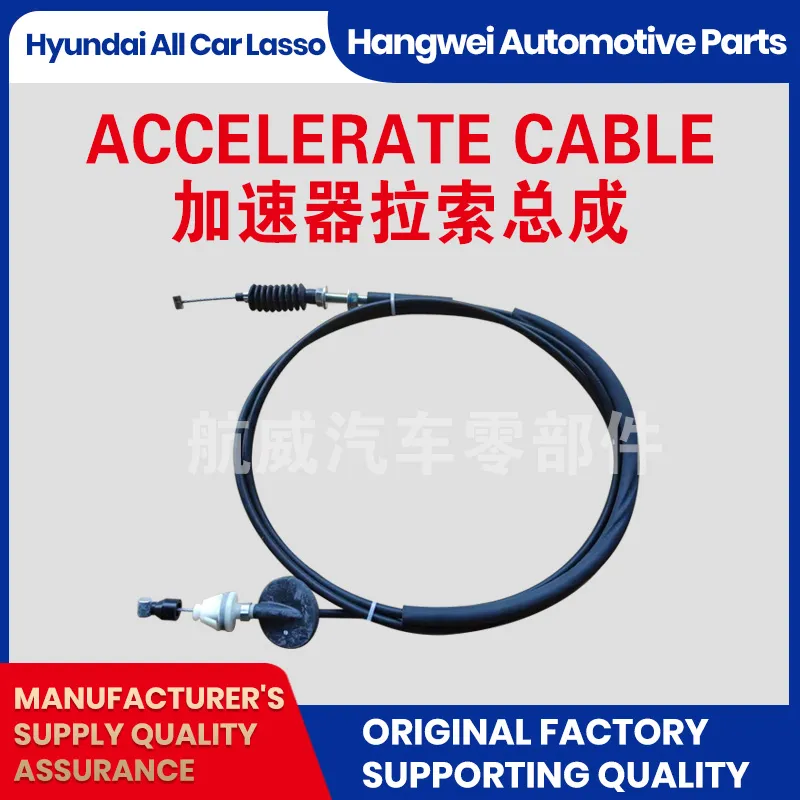throttle cable wire
Understanding Throttle Cable Wire Its Importance and Functionality
The throttle cable wire is a critical component in the operation of various types of vehicles, particularly in older models that rely on mechanical linkages for throttle control. This simple yet essential cable is responsible for transmitting the driver’s input, via the gas pedal, to the engine’s throttle body, essentially determining the vehicle's speed and power output. Understanding the throttle cable wire, its function, and its maintenance can enhance the performance of a vehicle and prevent potential issues down the line.
The Function of the Throttle Cable Wire
At its core, the throttle cable wire serves as a direct connection between the accelerator pedal and the engine's throttle plate. When the driver presses the gas pedal, the cable pulls on a lever attached to the throttle body, opening the throttle plate to allow more air into the engine. This increase in air, combined with the fuel injected into the engine, creates a more powerful combustion, thereby boosting the vehicle's speed.
The design of the throttle cable allows for a smooth transition of power from the driver’s foot to the engine. These cables are typically made from high-strength materials, capable of withstanding the tension and strain of regular use. Depending on the vehicle design, throttle cable systems can vary, with some featuring a single cable and others employing multiple cables for more complex throttle control systems.
Common Issues with Throttle Cable Wire
Despite its robustness, throttle cables can encounter issues over time. Common problems include fraying, sticking, or breaking, which can lead to poor throttle response or even complete failure. A frayed cable may cause uneven acceleration or delay in throttle response, potentially compromising the vehicle's performance and safety.
Another issue that arises is cable binding, where the cable becomes caught or obstructed in its routing. This can occur due to debris, improper installation, or wear and tear. A binding throttle cable may lead to unintended acceleration or difficulty in deceleration, creating dangerous driving conditions.
throttle cable wire

Maintenance of Throttle Cable Wire
Regular inspection and maintenance of the throttle cable wire are crucial for ensuring optimal vehicle performance. Drivers should periodically check for visible signs of wear or damage, such as fraying or rust, especially in regions exposed to moisture and environmental contaminants. Furthermore, maintaining the proper tension and lubrication of the throttle cable can prevent premature wear and operational issues.
When lubricating the throttle cable, a high-quality silicone-based lubricant is often recommended, as it can provide adequate protection without attracting dirt and grime. Additionally, it’s essential to ensure that the cable routing is free from any kinks or obstructions that could impede its movement.
Replacement of Throttle Cable Wire
If a throttle cable shows significant wear or damage, replacement is the best course of action. Fortunately, many aftermarket and OEM (original equipment manufacturer) throttle cables are readily available for various makes and models. Replacing the throttle cable can be a straightforward task, often doable with basic mechanical skills, but it’s critical to follow the manufacturer’s guidelines to ensure proper installation.
A malfunctioning throttle cable wire not only affects performance but can also lead to unsafe driving conditions. Therefore, attention to this component is vital, making it an essential part of vehicle maintenance.
Conclusion
In conclusion, the throttle cable wire may seem like a minor component in your vehicle, but its influence on performance is significant. Understanding its function, recognizing potential problems, and adhering to maintenance practices can enhance your driving experience and ensure your vehicle operates safely. Whether you’re a seasoned mechanic or a casual driver, taking the time to address the condition of your throttle cable can lead to improved vehicle reliability and performance. Keeping an eye on this vital part of your vehicle will pay off in the long run!
-
Workings of Clutch Pipe and Hose SystemsNewsJun.04,2025
-
The Inner Workings of Hand Brake Cable SystemsNewsJun.04,2025
-
The Secrets of Throttle and Accelerator CablesNewsJun.04,2025
-
The Hidden Lifeline of Your Transmission Gear Shift CablesNewsJun.04,2025
-
Demystifying Gear Cables and Shift LinkagesNewsJun.04,2025
-
Decoding Clutch Line Systems A Comprehensive GuideNewsJun.04,2025
